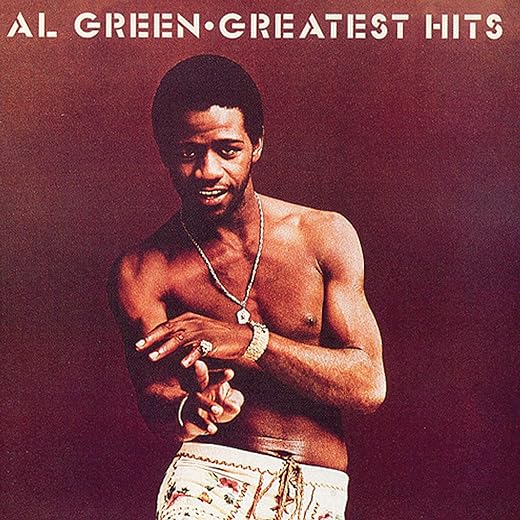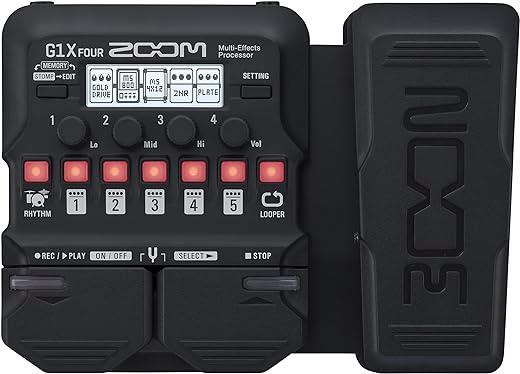Understanding Vinyl Record Grades
Are you a music enthusiast who has recently delved into the world of vinyl records? If so, brace yourself for a mind-boggling fact: Did you know that some vinyl records can be worth thousands of dollars? Now, before you start rummaging through your old collection, it’s crucial to understand the concept of vinyl record grading. In this blog post, we will demystify the different vinyl record grades and help you navigate the vast world of vinyl collecting. Whether you’re a seasoned collector or a curious beginner, this post will equip you with the knowledge to make informed decisions about your vinyl purchases. So, grab a cup of coffee and let’s dive into the fascinating realm of vinyl record grades.
Top-selling Vinyl Records
What are Vinyl Record Grades?
Vinyl records have made a remarkable comeback in recent years, with their warm sound and nostalgic charm attracting music lovers of all ages. Whether you’re a seasoned collector or just starting your vinyl journey, it’s important to understand the concept of vinyl record grades. These grades help you assess the condition and quality of vinyl records, ensuring you make informed purchasing decisions. In this article, we’ll delve into the different grading systems commonly used in the industry.
The Importance of Vinyl Record Grades
Vinyl record grades serve as a guide for buyers and sellers to determine the condition of a record. They provide valuable information about potential defects, such as scratches, warps, or skips, which can affect sound quality. By understanding the grading system, you can make informed decisions about the value and condition of a record before purchasing or selling it.
The Goldmine Standard
One widely recognized grading system is the Goldmine Standard, which offers a comprehensive set of guidelines for assessing vinyl record condition. Here are the key grades used in this system:
- Mint (M): A record classified as Mint is in perfect condition. It should be unplayed, with no visible marks or signs of wear on the vinyl or cover.
- Near Mint (NM): Records classified as Near Mint are almost perfect, with only minor signs of handling or play. The vinyl and cover may have slight imperfections that do not impact sound quality.
- Very Good Plus (VG+): A record classified as Very Good Plus shows some signs of use and has minor surface marks or hairline scratches. The vinyl may have some light surface noise or occasional pops, but it should not significantly affect the overall listening experience.
- Very Good (VG): This grade indicates a record that has been well-loved and played. It may have noticeable surface marks, scratches, or scuffs that can cause surface noise, clicks, or pops. However, the record should still play through without skipping.
- Good (G): Records classified as Good have visible signs of wear and tear, including deep scratches, warps, or significant surface noise. While the record may still be playable, sound quality is compromised.
- Poor (P): The Poor grade signifies a record that is heavily damaged, with severe scratches, warps, or skips. Sound quality will be significantly affected, and the record may be unplayable in parts.
It’s worth noting that some sellers use “+” or “-” signs to provide more specific gradations within each category.
Other Grading Systems
While the Goldmine Standard is widely recognized, other grading systems also exist. Here are a few examples:
- Record Collector: This system provides additional gradations within each category, such as Excellent (EX) and Very Good Minus (VG-). It offers a more detailed assessment of the record’s condition.
- UK Record Collector’s Magazine: This system uses a numeric grading scale from 1 to 10, with 10 being the highest grade. It provides a more precise evaluation of the record’s condition.
Benefits of Understanding Vinyl Record Grades
Understanding vinyl record grades offers several benefits:
- Helps you assess the condition and value of records before purchasing or selling them.
- Allows you to make informed decisions about the quality of sound you can expect from a record.
- Helps you avoid disappointment by ensuring you receive records in the condition you expect.
Factors to Consider in Vinyl Record Grades
Vinyl records have made a comeback in recent years, rekindling a love for the rich sound and nostalgic experience they offer. Whether you are a seasoned collector or a beginner looking to build your vinyl collection, understanding vinyl record grades is essential. The grade assigned to a vinyl record provides valuable information about its condition and overall quality. In this blog post, we will explore the key factors that are taken into account when assigning vinyl record grades.
1. Vinyl Condition
The condition of the vinyl itself is a crucial factor in determining the grade of a record. Scratches, scuffs, warps, and other imperfections can affect the sound quality and playability of the record. Here are some key points to consider when assessing the condition of vinyl:
- Visual Inspection: Carefully examine the vinyl for any visible signs of wear, such as scratches or scuffs. These can be assessed using a grading scale, from light surface marks to deep scratches that may cause skipping or distortion during playback.
- Playability: Play the record to check for any audible issues, like pops, crackles, or skips. These can be caused by imperfections on the vinyl’s surface, which may affect the overall listening experience.
- Warps: Warped records can cause tracking problems and affect the sound quality. Minor warps may not have a significant impact, but severe warping can render a record unplayable.
2. Sleeve or Cover Condition
The condition of the sleeve or cover is another critical aspect to consider when grading vinyl records. The sleeve protects the record and often contains valuable information and artwork. Here are some factors to assess when evaluating the condition of the sleeve:
- Seam Splitting: Look for any splits, tears, or damage to the seams of the sleeve. These can greatly diminish the value and aesthetic appeal of the record.
- Ring Wear: Check for any ring wear or discoloration on the front or back cover caused by storage or handling. Excessive ring wear can significantly affect the grade of the record.
- Inserts and Extras: Assess the presence and condition of any inserts, posters, or extra materials that were originally included with the record. These additional items can add value to the overall package.
3. Additional Factors
In addition to the condition of the vinyl and the sleeve, there are other factors that may affect the overall grade of a vinyl record. These factors can vary depending on the specific release or pressing. Some additional factors to consider include:
- Pressing Quality: Different pressings of the same album may vary in quality, affecting the grade. For example, a first pressing may be considered more desirable than a later reissue.
- Special Editions: Limited editions, colored vinyl, or audiophile pressings often have higher grades due to their rarity and desirability among collectors.
- Promotional Items: Records that were used for promotional purposes, such as radio station copies or advance pressings, may have unique labels or markings, which can affect their grade.
Understanding these factors and considering them when assessing vinyl record grades can help you make informed decisions when buying or selling records. By paying attention to the condition of the vinyl, sleeve, and any additional factors, you can ensure you are getting the best possible quality and value from your vinyl collection.
Remember, a higher grade does not always mean a better listening experience. Some collectors prioritize pristine condition, while others enjoy the character and history that comes with well-loved records. Ultimately, the choice is yours based on your personal preferences and goals as a collector.
Common Vinyl Record Grades
Vinyl records have been a staple in the music industry for decades, and their popularity remains strong among collectors and audiophiles alike. When buying or selling vinyl records, it’s important to understand the different grades used to describe their condition. In this article, we will provide an overview of the most commonly used vinyl record grades, such as Mint, Near Mint, Very Good Plus, Very Good, Good, and Fair. We will explain what each grade means and what to expect in terms of the record’s condition.
Mint
- A record that is in perfect, pristine condition, as if it were just taken out of the shrink wrap.
- No visible signs of wear, scratches, or surface noise.
- The record sleeve is also in perfect condition, with no creases, tears, or markings.
Near Mint
- A record that is very close to being in Mint condition, with only minor signs of handling or storage wear.
- There may be a few light surface marks or hairline scratches that do not affect playback.
- The record sleeve may have slight signs of wear, such as light creases or corner dings.
Very Good Plus
- A record that has been played, but well taken care of.
- There may be some visible surface marks or light scratches, but they should not affect the sound quality.
- Some background noise may be present during playback, but it should not overpower the music.
- The record sleeve may have some signs of wear, such as ring wear, seam splits, or writing on the cover.
Very Good
- A record that has been played frequently and shows signs of wear and tear.
- There may be visible surface marks, scratches, or scuffs, but they should not cause skips or jumps during playback.
- Some background noise and crackles may be present, but the music should still be enjoyable.
- The record sleeve may have significant wear, such as split seams, writing, or stickers.
Good
- A record that has been well-loved and shows significant signs of wear.
- There may be deep scratches or scuffs that can affect the sound quality and cause skips or jumps during playback.
- Background noise, crackles, and pops will likely be present and may overpower the music at times.
- The record sleeve will have noticeable wear and tear, such as large seam splits, writing, or damage.
Fair
- A record that is heavily worn and may not play properly.
- Deep scratches, scuffs, and warping may cause significant skips, jumps, or distortion during playback.
- Background noise, crackles, pops, and surface noise will be present and may make it difficult to enjoy the music.
- The record sleeve will have extensive wear and damage, such as missing sections, tears, or water damage.
Understanding the different vinyl record grades is essential when buying or selling records. It allows collectors and buyers to make informed decisions about the condition and value of a record. Whether you’re a vinyl enthusiast looking to expand your collection or a seller hoping to attract buyers, being knowledgeable about record grades will ensure a smooth transaction and a satisfactory listening experience.
Remember, when it comes to vinyl records, condition is key. While a Mint or Near Mint record may fetch a higher price, a well-played Very Good or Very Good Plus record can still provide an enjoyable listening experience. Ultimately, it’s about finding the right balance between condition and affordability.
Note: It’s important to handle vinyl records with care, using a record cleaning brush and keeping them stored in protective sleeves to preserve their condition and sound quality.
Tips for Buying Vinyl Records with Different Grades
Vinyl records have made a remarkable comeback in recent years, attracting both avid collectors and music enthusiasts alike. However, buying vinyl records can be a bit daunting, especially when faced with different grades. In this blog section, we will provide practical tips and advice to help you navigate the world of vinyl record grading, enabling you to make informed decisions and optimize your record collection.
Inspecting Vinyl Records Before Purchasing
When buying vinyl records, it is important to thoroughly inspect them to ensure their quality and condition. Here are some key steps to follow:
- Visual Examination: Carefully examine the record for any visible flaws or signs of damage. Look out for scratches, scuffs, warps, or signs of poor storage. It is particularly important to inspect the playing surface, as any imperfections can affect sound quality.
- Check for Warping: Place the record on a flat surface and observe if it lies flat or if it has a noticeable warp. While slight warping may not significantly impact sound quality, excessive warping can cause skipping or distortion during playback.
- Inspect the Sleeve: Pay attention to the condition of the record sleeve, as it can provide valuable insights into how well the record has been cared for. Look for signs of wear, tears, or water damage.
Identifying Common Issues
Understanding and recognizing common issues in vinyl records will help you make better purchasing decisions. Here are some issues to be aware of:
- Surface Noise: Surface noise refers to the background noise present during playback. While some degree of surface noise is normal, excessive crackling, popping, or hissing may indicate a record that is heavily worn or improperly cleaned.
- Wear and Tear: Look out for wear and tear, such as deep scratches, groove wear, or groove distortion. These can impact the sound quality and may cause skips or jumps during playback.
- Mold and Mildew: Inspect the record for any signs of mold or mildew. These can cause permanent damage and affect both sound quality and playability.
Understanding the Grading System
Vinyl records are often graded using a standardized system that provides an overall assessment of their condition. While grading systems may vary, the most common one is as follows:
- Mint (M): Records in mint condition are considered pristine, with no visible flaws or signs of wear. These records are highly sought after and often come with a premium price tag.
- Near Mint (NM): Near mint records are also in exceptional condition, with only minor signs of handling or storage wear. They are often indistinguishable from mint records.
- Very Good Plus (VG+): Records graded as very good plus have some signs of use and wear, but are still in excellent condition overall. They may have light surface marks or some minor flaws that do not affect sound quality.
- Very Good (VG): Very good records have more noticeable signs of wear, such as surface marks, light scratches, or visible groove wear. However, they still offer a decent listening experience with acceptable sound quality.
- Good (G): Records in good condition will have significant signs of wear and may exhibit surface noise, scratches, or skips during playback. They are best suited for casual listening rather than audiophile enjoyment.
By understanding the grading system, you can make informed decisions based on the condition and price of the record.
Making Informed Decisions
When buying vinyl records, it is essential to consider your personal preferences and budget. Here are some additional tips to help you make informed decisions:
- Research the artist, album, and pressing: Different pressings of the same album can vary in sound quality, so it’s worth looking into the specific release you are interested in.
- Consider the rarity and demand: Highly sought-after records may command higher prices, but they can also be great additions to your collection. Understand the market value and rarity of the record you are considering.
- Ask for a play-test: If possible, request to play-test the record before purchasing. This will give you an opportunity to evaluate its sound quality and condition firsthand.
- Buy from reputable sellers: Whether you prefer online marketplaces or physical record stores, it is important to buy from reputable sellers who accurately describe the condition of the record.
By following these tips and guidelines, you can confidently build a vinyl record collection that brings you joy and high-quality listening experiences. Happy hunting!
Summary and Recommendations
In conclusion, understanding vinyl record grades is crucial for any music enthusiast or collector. Throughout this blog post, we have explored the various factors that contribute to the grading system, such as visual condition, audio quality, and rarity. We have also discussed the importance of taking into account these factors before purchasing or selling vinyl records.
Based on the information provided, it is recommended that you carefully evaluate the condition and quality of the record before making any buying or selling decisions. Paying attention to factors like scratches, warps, and playability will ensure that you are making an informed choice and obtaining a record that meets your expectations.
Additionally, it is advisable to consider the rarity and demand of the record, as this can significantly impact its value and desirability within the market. Researching market trends and consulting experts in the field can help you navigate the complexities of vinyl record grading effectively.
Overall, understanding vinyl record grades empowers you to make informed decisions, whether you are starting a collection, expanding an existing one, or looking to sell records. By considering the visual condition, audio quality, rarity, and demand, you can ensure a rewarding and satisfying experience in the world of vinyl records.








![good kid, m.A.A.d city - Exclusive Limited Edition Clear 2XLP Vinyl [Condition-VG+NM]](https://m.media-amazon.com/images/I/61Ae34HzPqL._SL1387_.jpg)








I’d love to learn more about caring for vinyl records. Are there any recommended resources or books on this topic?
Absolutely! There are several great resources and books available on vinyl record care. Some popular ones include ‘The Vinyl Detective’ by Andrew Cartmel, ‘Vinyl: The Art of Making Records’ by Mike Evans, and ‘The Complete Idiot’s Guide to Vinyl’ by Michael Gallant. These books cover various topics including cleaning, storing, and maintaining vinyl records. I hope you find them helpful!
I’ve heard some collectors debating whether it’s better to buy original pressings or reissues. What are your thoughts on this?
The debate between original pressings and reissues is an interesting one. Original pressings can have historical value and may offer a unique listening experience. However, reissues often come with the advantage of improved sound quality and sometimes bonus features. Ultimately, it depends on your personal preference and what you value more in your vinyl collection. There’s no right or wrong answer here!
Thank you! I’m glad the article was helpful to you. If you have any specific questions or need further clarification, feel free to ask.
I find it difficult to find affordable vinyl records in good condition. Any tips on where to find them without breaking the bank?
Finding affordable vinyl records in good condition can be a challenge, but there are a few options. Thrift stores, flea markets, and garage sales can sometimes have hidden gems at lower prices. Online marketplaces like Discogs or eBay can also be good places to find deals, especially if you’re patient and willing to browse. Finally, consider joining local vinyl collector groups or forums where members often trade or sell records at reasonable prices. Good luck with your search!
I’m new to vinyl records and I was wondering if there are any specific brands or labels that are known for their high-quality records?
There are definitely some brands and labels that are known for producing high-quality vinyl records. Some popular ones include Mobile Fidelity Sound Lab (MFSL), Analogue Productions, and Music Matters Jazz. These labels often use high-quality materials and meticulous manufacturing processes to ensure excellent sound quality. However, it’s worth noting that there are also many great records from various other labels and artists. It’s ultimately about finding the music you love and enjoying the vinyl experience!
I’ve had some bad experiences buying vinyl records online. Sometimes the condition of the record doesn’t match the description given by the seller. Any tips for avoiding such situations?
I’m sorry to hear about your bad experiences. It can be frustrating when the condition of the record doesn’t match the description. One tip is to look for sellers with good ratings and reviews. Additionally, don’t hesitate to ask for detailed photos or descriptions before making a purchase. If you’re unsure about a seller, you can also consider buying from reputable online vinyl retailers or local record stores. I hope these tips help!
I’ve always struggled with understanding the different vinyl record grades. This article was really helpful in explaining it clearly!
I recently started collecting vinyl records and I find it difficult to determine the condition of a record without actually seeing it. Any tips on what to look for when buying used records?
Buying used records can be a bit tricky, but there are a few things you can look for. Check for any visible scratches, warps, or signs of damage on the vinyl itself. Also, inspect the record sleeve for any tears or stains. Additionally, it’s always a good idea to ask the seller about the record’s history, such as how it was stored and played. Hope these tips help!
I’ve been collecting vinyl records for years, and one thing I’ve learned is that the grading system can vary from seller to seller. Some sellers might use a more lenient grading scale while others are stricter. It’s always good to ask for detailed descriptions or photos of the actual record before making a purchase.
You’re absolutely right! The grading system can be subjective, and it’s important to communicate with the seller to ensure you have a clear understanding of the record’s condition. Asking for detailed descriptions or photos is a great way to ensure you’re getting what you expect. Thanks for sharing your experience!